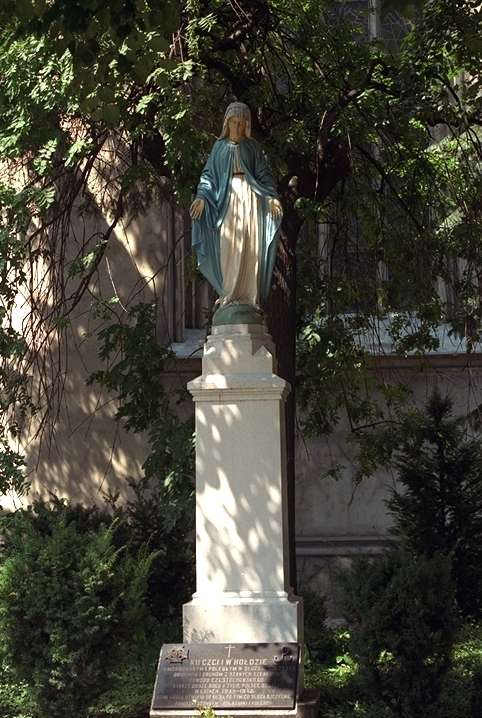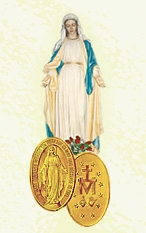The Miraculous Medal
In 1830 Our Lady appeared to a young nun in Paris, France who today is known to us as St. Catherine Laboure.
Mary in a vision showed Catherine the design of a medal. The purpose of the medal is to honour the Immaculate Conception of Our Lady. Because of the numberless miracles and favours obtained it has come to be known as "The Miraculous Medal".
There were rays of light in varying lengths falling from Mary's hands. These rays represented the different graces which Mary dispenses to her trusting clients.
Mary asked for the medal to be worn around the neck and she promised great graces to those who wear the medal with confidence. The prayer on the medal is: "O Mary conceived without sin pray for us who have recourse to thee".
The graces obtained are in relation to the trust and faith in Mary's promise which the wearer of the medal has.
Whenever you have a problem which seems to be beyond help repeat the prayer on the medal and at the same time in your mind visualise Our Lady as she appeared to St. Catherine Laboure. If it is hard for you to see this in your imagination obtain a holy card of Our Lady as she showed herself in the Miraculous Medal vision or view a statue of Our Lady such as the one in the picture on this web page (The Immaculate Conception Statue).
What kinds of favours does Mary grant through the Miraculous Medal? Any kind of favour that is needed by her children, employment, financial help, cures of the body and mind, protection in accidents, conversions, in fact all of our needs. We must do our best to help ourselves but many times that will fall short of what is needed and only God can help us at that stage. I have found the Miraculous Medal to be an invaluable help to me in diverse circumstances. Be absolutely confident that Mary is really going to help you and you will receive assistance from her.
To learn more about the Miraculous Medal please visit the website of
This is one of my favourite web sites. They have a great deal of information about the Miraculous Medal and its early history. Also included on the web site are many letters regarding favours obtained.


